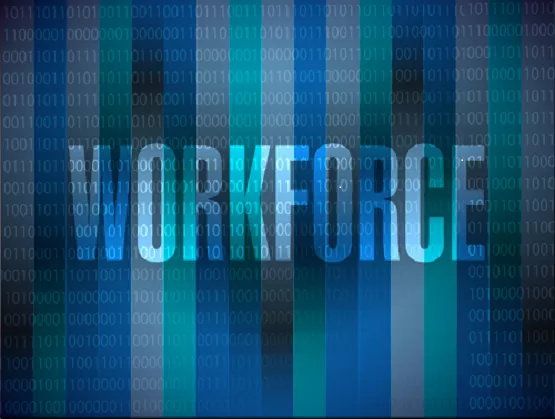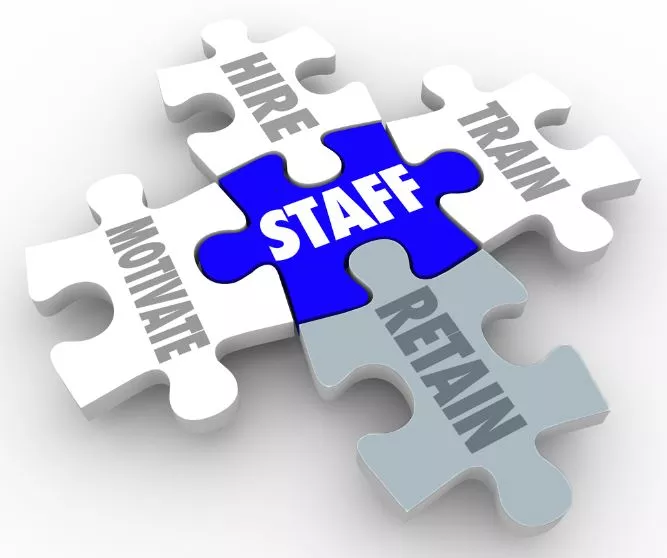
As we round the corner on 2021, the microelectronics industry continues to face a severe talent crisis. With more than 34,000 jobs remaining unfilled at SEMI member companies in the United States alone, everyone is competing for the same talent pool. While the semiconductor shortage has received extensive media coverage, a critical talent shortage deserves equal attention.
One way to address the talent shortage is to hold the line. Meaning, in addition to recruiting more diverse talent into the chip industry, we must retain the quality workforce we have. I believe that a key component of a diversity, equity and inclusion program must be retention.
At Edwards, we feel so strongly about this that we have made retention a key part of our Diversity, Equity and Inclusion program – even changing the acronym to DEIR (pronounced DEER; diversity, equity, inclusion and retention) for emphasis.
There are three overarching approaches we can take to promoting diversity-focused retention:
- Investment in on-boarding practices that allow time to hire appropriately and ensure a diverse pool of qualified candidates
- Embedded programming and policies that are learning and development (L&D) based including career planning, succession planning, unconscious bias training, employee resource groups (ERG) and mentoring
- Corporate culture that respects employees through a healthy work life balance and promotes the well-being of society and the planet
 This is a very important conversation. I asked Lubab Sheet-Davis, vice president of Strategy & Innovation in the Office of the CTO at Lam Research, and Emerald Greig, executive vice president Americas at SurplusGLOBAL USA, to share their considerable experience and insight related to retention and DEI. Following is an excerpt from our conversation, which has been edited for clarity and brevity.
This is a very important conversation. I asked Lubab Sheet-Davis, vice president of Strategy & Innovation in the Office of the CTO at Lam Research, and Emerald Greig, executive vice president Americas at SurplusGLOBAL USA, to share their considerable experience and insight related to retention and DEI. Following is an excerpt from our conversation, which has been edited for clarity and brevity.
Balaguer: In the context of DEI, why is employee retention so important?
Sheet-Davis: In my view, there is a strong correlation between inclusion and retention. If people feel that their voices and perspectives are valued, they are more likely not only to stay, but also to perform at a higher level. Driving both inclusion and retention is having a seat at the table, having your voice heard, respectful treatment and fair opportunity.
Retention is a core component of our inclusion and diversity strategy, which involves increasing representation by building a pipeline of diverse candidates, recruiting and retaining, fostering an inclusive culture (which supports retention) and open communication to share our progress.
Balaguer: What role does data play in the drive to increase retention?
 Greig: Ours is a data-driven industry and I am surprised that we have not let the statistics drive us into action sooner. Clearly, diversity, equity, inclusion and retention all affect the bottom line. Millennials and Gen Zs already leave faster than any other generational group. The turnover rate in the tech industry averages around 13% with stays around 2-3 years.
Greig: Ours is a data-driven industry and I am surprised that we have not let the statistics drive us into action sooner. Clearly, diversity, equity, inclusion and retention all affect the bottom line. Millennials and Gen Zs already leave faster than any other generational group. The turnover rate in the tech industry averages around 13% with stays around 2-3 years.
The cost to hire, train and integrate someone into a company is far more expensive than having a DEIR program in place to keep them. The Society for Human Resource Management (SHRM) reported that, on average, it costs a company 6 to 9 months of an employee's salary to replace them (which includes the costs of hiring, onboarding and training, L&D and time to fill the role). For an employee making $60,000 per year, that comes out to $30,000 to $45,000 in recruiting and training costs.
Sheet-Davis: Yes, which gives us all the more reason to move quickly! Given how central DEIR is to innovation, and that the challenges and opportunities facing our industry are bigger now than ever before, I believe we should be addressing DEIR with the same vigor that we address Moore’s Law.
I worry if we keep saying DEIR will take time, it will take time. Granted many DEIR issues are cultural and culture is hard to change. However, this industry has demonstrated the capability to drive breakthroughs and to do so quickly. Let’s focus on DEIR with urgency while also ensuring the progress is sustainable.
Balaguer: There is no doubt we need to move with a sense of urgency. I think a good way to keep the pedal to the metal is to create a DEIR roadmap that tracks our progress on multiple programs and helps us be accountable and stay focused. Meaningful retention strategies begin with solid diversity-focused hiring strategies.
Balaguer: How does corporate culture inform retention?
 Greig: Let’s not forget: Employees, especially millennials, are looking for a corporate culture that demonstrates social responsibility as well as leadership and career development. In a recent study, 65% of employees said positive corporate culture has encouraged them to stay with their company. In fact, companies with strong cultures have seen a four-fold increase in revenue growth.
Greig: Let’s not forget: Employees, especially millennials, are looking for a corporate culture that demonstrates social responsibility as well as leadership and career development. In a recent study, 65% of employees said positive corporate culture has encouraged them to stay with their company. In fact, companies with strong cultures have seen a four-fold increase in revenue growth.
We have raised a generation that strongly believes in being accepting of others and embraces equity and inclusion in their daily lives. They expect their employer to have this as part of their DNA. They believe in science, climate change, recycling, conservation, and similar sustainability issues and they want to know that they are making or doing something that makes the world a better place. If tech companies cannot convince millennials and Gen Z's that the companies are socially responsible and are doing all they can to embrace DEIR as part of their company culture, then the millennials will go elsewhere.
Balaguer: How can employee resource groups be a building block for retention?
Sheet-Davis: We support employee resource groups that are voluntary, employee-led and coalesce around demographic factors such as gender, ethnicity, sexual orientation or generation. Each has an executive sponsor, budget, plans and leadership structure. ERGs support inclusion by creating a sense of belonging, building comradery, and providing a safe space to raise awareness and help educate the rest of the company through a number of activities such as community service, holiday celebrations, guest speakers, networking, training courses and more. I serve as the executive sponsor of our Women@Fremont group, which is focused on accelerating the advancement of women in their early to mid-career at Lam’s headquarters. I know ERG members genuinely value the company’s support.
Balaguer: What can we do during the hiring process to lay a strong foundation for employee retention?
Greig: I believe that the work we do at the front end in terms of hiring practices are one of the main reasons we have a low turnover rate at SurplusGLOBAL. We have a policy to have three interviews for each candidate. Not three different people, but bring them in three times. Additionally, we have a 90-day trial and review period to make sure there is a good fit for both parties. Investing time up front ensures the right hire and the small size of our company allows us to know our employees. We can be nimble and quickly respond to employee needs as they arise.

Balaguer: In what ways do you think mentoring can help improve retention?
Sheet-Davis: Another aspect of building a more inclusive culture, and hence promoting retention, is through mentoring programs. Mentorship supports an employee’s development, growth and career planning. It’s a great way to get to know people, understand their ambitions and support their development. Hopefully, it results in sponsorship because that is what helps drive career advancement. Ultimately, I want to advocate for those that I mentor.
Balaguer: At Edwards, we are refreshing mentoring as part of our DEIR program. I see mentoring as a program that can support employee retention in multiple ways including career planning, professional development, succession planning and promoting inclusivity. Encouraging and empowering personal development is key in growing a productive workforce and mentoring does all these things. Often overlooked is the fact that mentoring is a benefit to both the mentor and the mentee. I have personally mentored several young professionals at Edwards, and I can attest that I have learned as much from them as they have from me. Mentoring is definitely a two-way street.
Balaguer: What’s your message to our readers about retention as an element of diversity, equity and inclusion?
Greig: I am excited to see DEIR and especially, retention, gaining traction. The semiconductor industry has always tended to have a cyclical rhythm to it. A generation of potential employees have grown up witnessing the fallout from periodic down cycles and the inevitable reductions in workforce. I think there is an element of rebranding we need to do in this area to support our retention efforts.
Sheet-Davis: If we only focus on recruiting and not retention, we tread water. Consistent with any other successful business strategy, a holistic integrated approach to DEIR that is prioritized, resourced and sustained over time is key.
Balaguer: We all agree that retention is a key component in the war for talent. While this conversation has been more wide-ranging than we can share with our readers, the prime takeaways have focused on these elements: Follow the data. Execute with a sense of urgency. Hire right. Work hard on inclusionary programming such as ERGs, mentoring and sponsorship. Build a genuine corporate social responsibility program. Retention will result.
Many thanks to Lubab Sheet-Davis and Emerald Greig. As always, comments, questions and suggestions are welcome. We can be reached at Lubab.Sheet-Davis@lamresearch.com, emerald@surplusglobal.com and Scott.Balaguer@edwardsvacuum.com. I invite our readers to join the conversation, as well as review the recently released SEMI Foundation DEI Roadmap and Toolkit.
Scott Balaguer is Vice President and General Manager, Semiconductor Division at Edwards Vacuum LLC and Chairman of the SEMI North America Advisory Board.